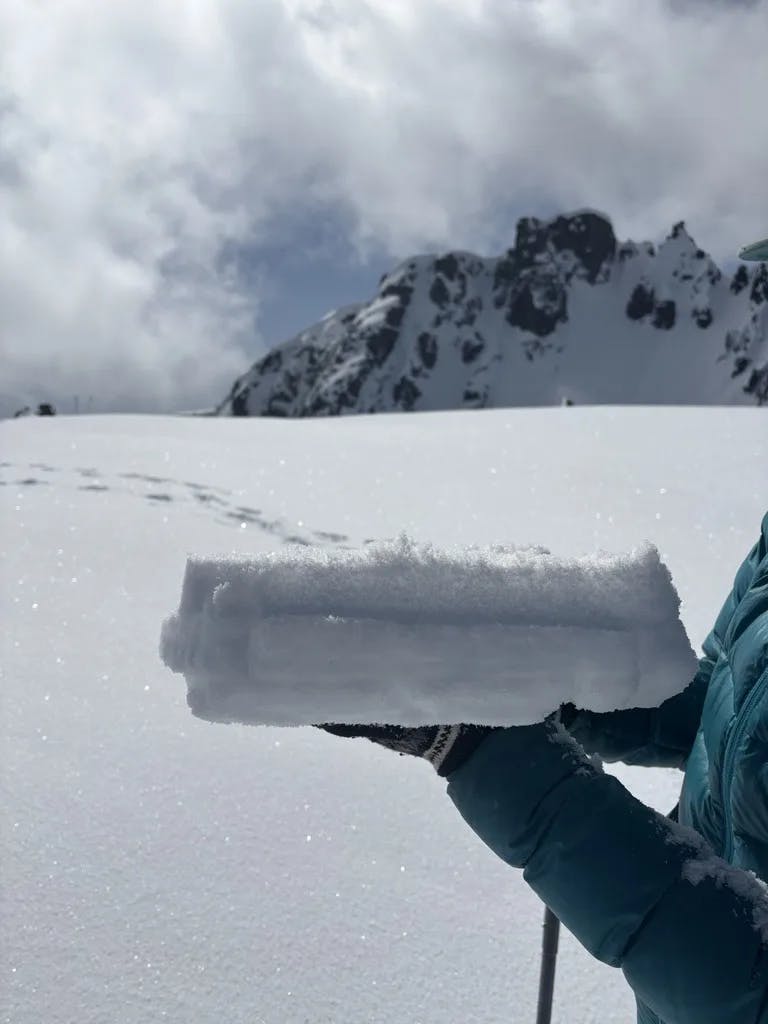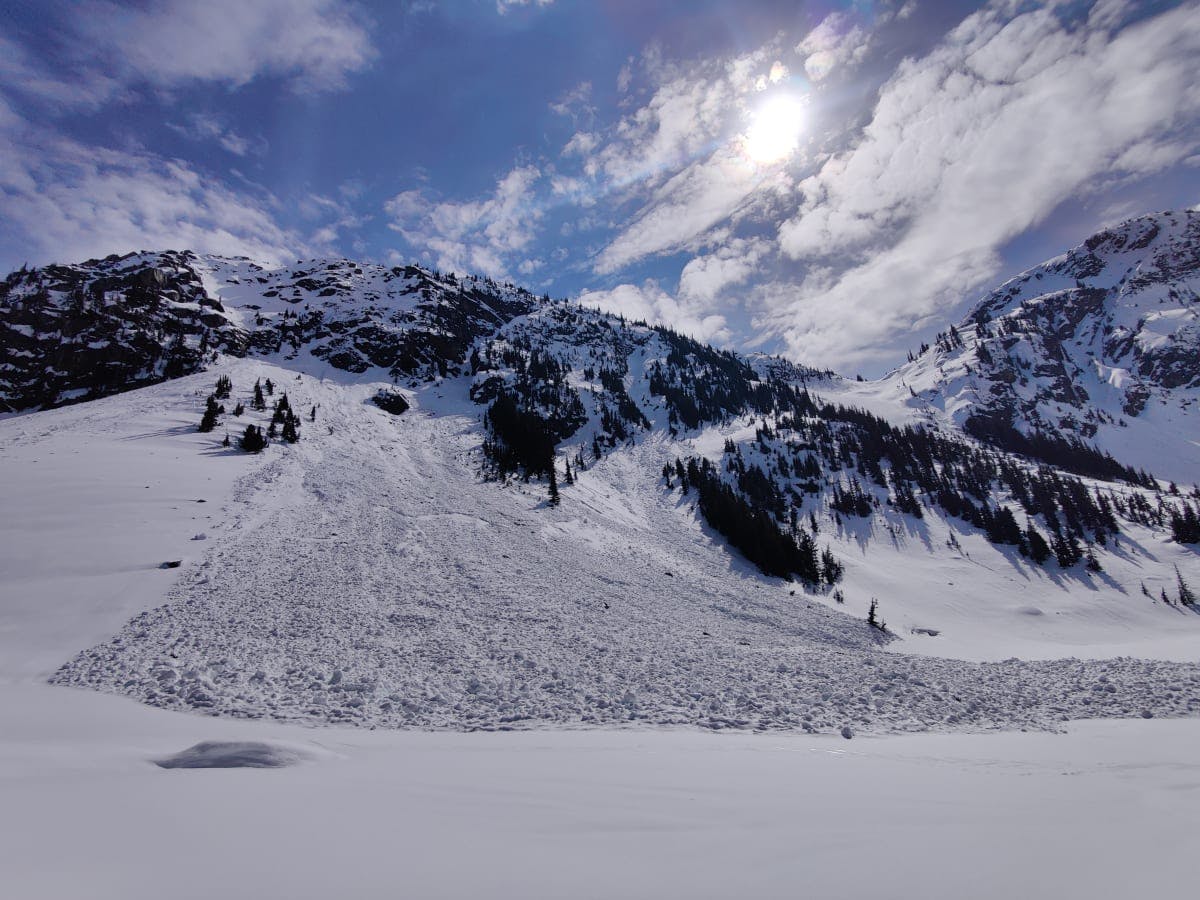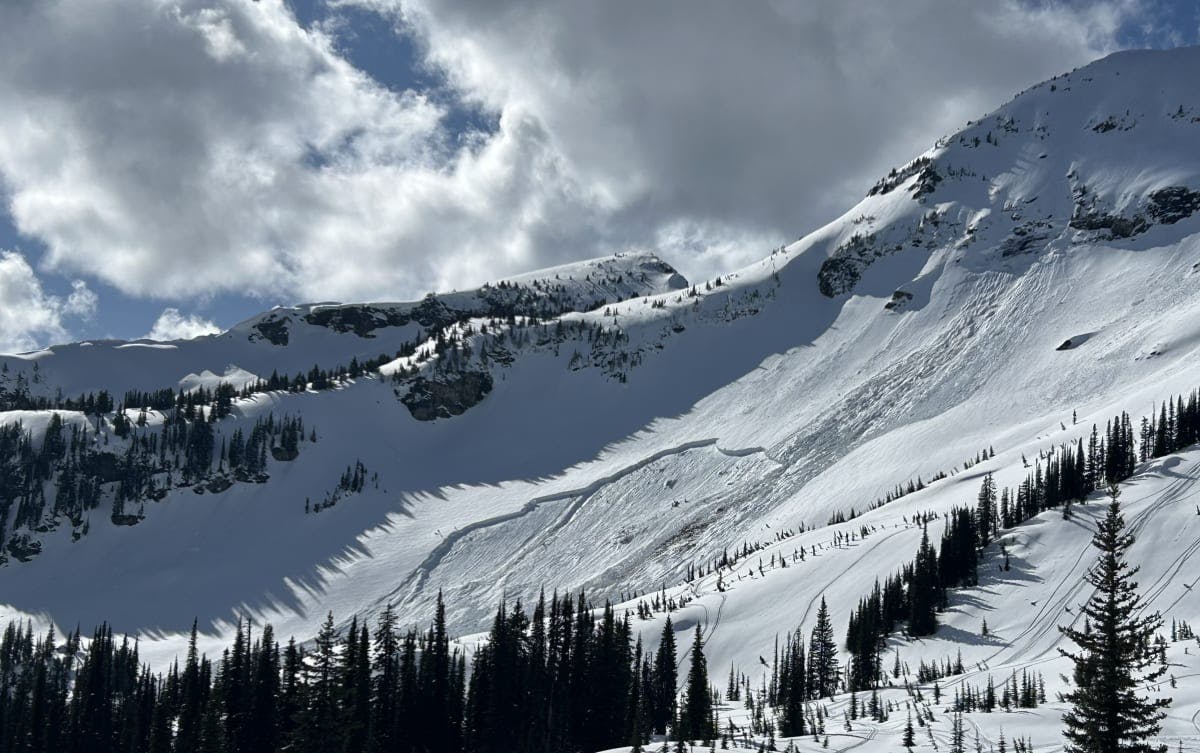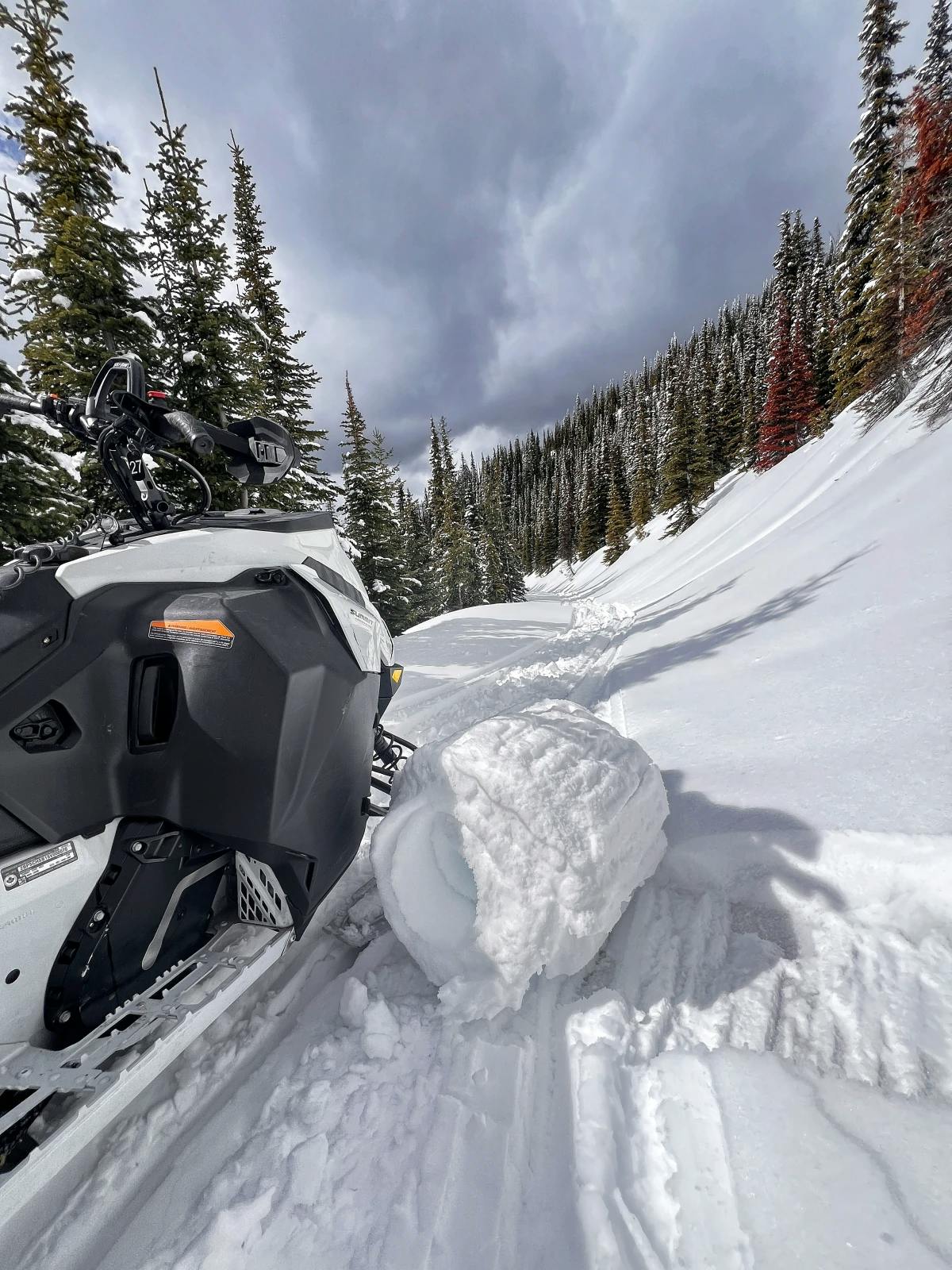- Date
- Monday, April 14, 2025
Spring snowpack dynamics can be tricky, it’s not like any other time of year. One of the keys to managing the changeable nature of spring is understanding the differences between two common spring scenarios—melt-freeze and all-melt, no-freeze.
Let’s unpack these scenarios and break down what to expect for weather, snowpack behavior, avalanche activity, and how to manage terrain in each situation. While the names give you a hint, there’s more to them than meets the eye.
Melt-Freeze
As daytime temperatures rise, the snow surface melts and softens. Overnight, as temperatures drop, the melted snow refreezes. This cycle of thawing and refreezing is known as a spring diurnal cycle.
When the snow refreezes, bonds form between the snow crystals—a process we refer to as "recovery." This is when the snowpack gains strength, becoming more cohesive and stable. A thin, breakable surface crust indicates a weak refreeze, while a thick crust signals a stronger recovery and reduces the likelihood of avalanche activity.

A thick melt-freeze crust can make it more difficult to trigger avalanches on deeper layers in the snowpack. Credit: AvCan Vancouver Island Field Team MIN.
As daytime temperatures or the sun warms up the snowpack, the crust and surface snow begin to soften. Loose wet avalanches and wet slab avalanches become more likely as the crust softens and surface snow loses cohesion. Over time, repeated melt-freeze cycles create corn snow, where the snowpack remains supportive, and a soft surface offers fantastic riding conditions.

Wet avalanche activity is most likely if the surface crust breaks down. Credit: MIN User NICOLAS.2.
All Melt, No Freeze
In this scenario, daytime temperatures rise, but the snowpack is unable to refreeze overnight. This occurs when freezing levels remain high, cloud cover traps heat, or rain continues to melt the snowpack. Regardless of what drives it, the snowpack stays in a weak state without the chance to recover.
When temperatures rise the next day, the snowpack destabilizes much faster because it’s already fragile. As the conditions persist, heat and melt penetrate deeper into the snowpack, and avalanches on deeper persistent weak layers become more likely.

Large avalanches on buried weak layers are most likely when warming affects deep into the snowpack. Credit: MIN user ITSAS.
The snowpack becomes isothermal when all layers reach 0°C. Isothermal snow is weak, with no structure to hold it together. This is when avalanche danger is at its highest, and large, destructive avalanches are expected.
Managing Spring
Melt-freeze cycles offer more predictable snowpack behavior.
- Avalanche danger is typically Low when the snowpack is frozen, rising as warming and sun affect the snowpack. Danger ratings can reach High over a matter of hours.
- The frozen snowpack presents a window of opportunity to cross large, consequential slopes before they are affected by daytime warming.
- Travelling on a thick, hard crust means avalanches are unlikely, but it can create slippery and challenging travel conditions.
- As warming occurs and snow softens, the risk of wet avalanches increases.
- Step back into conservative terrain as warming affects the snowpack. Factor in overhead hazard as the heat builds.
- Start and finish your day early to take advantage of more stable conditions before danger rises.
- If temperatures rise higher than the snowpack has previously been exposed to, melting penetrates deeper into the snowpack. This disrupts the diurnal freeze-thaw cycle, potentially triggering avalanches that involve deeper layers.

Rocks are common trigger points for wet avalanche activity during spring. Credit: MIN User R.M.INSTONE.
All melt, no freeze conditions are more uncertain.
- Danger ratings rise and remain elevated.
- Maintaining conservative terrain choices is essential
- The potential for large, destructive avalanches increases with each day lacking overnight recovery, as the snowpack is unable to regain strength.
- During strong sunshine, avoid sun-exposed slopes and head for shaded, north facing terrain where heating is less intense.
- Minimize exposure to overhead hazards, as avalanches may run full path.
Spring Sticking Points
In both scenarios, sun-affected slopes warm and lose cohesion most quickly. Avalanche danger can increase rapidly, sometimes in just minutes, with rising temperatures and strong sunshine. Pay attention to how deep your boot sinks into the snowpack if you step off your gear, and stay alert to changing snow conditions throughout the day. Even as temperatures start to drop in the evening, exercise caution. It can take several hours for the snowpack to fully stabilize. Cornices also become weak during spring and are prone to sudden failure. Give them plenty of space, both on and below ridgelines.

Large overhanging cornices can become weak during the spring, especially during all melt, no freeze conditions. Credit: AvCan Newfoundland Field Team MIN

Glacier ice can become fragile and trigger avalanches when it fails. Use extra caution around overhead glacier features during periods of warming. Credit: MIN User KOOB.MARK.

Rollerballing and pinwheeling are signs of a warming snowpack. Credit: South Rockies Field Team MIN.
The Bottom Line
While both scenarios carry avalanche risks, all melt, no freeze conditions are generally more dangerous. Without any overnight refreeze, the snowpack begins each day already weak and unstable, and a more conservative approach is needed. In contrast, with good timing and terrain management, melt-freeze conditions can be a time for big objectives and spring traverses.
Being able to identify the pattern and predict how the snowpack will react is essential for safe backcountry travel in the spring. Stay alert to changing conditions—the snowpack doesn’t handle rapid change well, and spring weather can shift quickly!